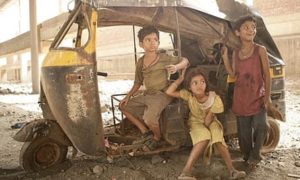Cruelty of child labour seen through the lens
Though the Indian society has turned a blind eye towards child labour, the film industry has been highlighting this curse with various films over the decades.
With the world’s largest population of child labour, one would imagine that the society would be extremely sensitive to the cause of eliminating this blot. However, few common persons care about the issue, even as they regularly come across thousands of children forced into labour from a very young age working at tea shops and restaurants rather than attending schools. Thankfully, however, the Indian film industry has tried to put a spotlight on the problem.
The filmmakers have attempted to highlight the reasons that force the children to build their livelihood. From films like Salaam Bombay to Stanley ka Dabba, the film industry has managed to portray the hardships and cruelty faced by poverty-ridden kids. On this World Day Against Child Labour, Media India Group brings a selection of some of the films that have left a lasting impression on the minds of the cine-goers.
Films like Boot Polish and Dosti, which were made during the golden age of Hindi cinema in the 1950s, are the earliest example of movies that have showcased child labour through their storytelling. In Boot Polish (1954), a story of two orphan kids, director Prakash Arora, weaves the narrative around their struggle to live under the care of their wicked aunt and the strong bond that the two siblings share in the face of adversity becomes the emotional driving point of the movie. Towards the end of the 1980s, Salaam Bombay (1988) directed by Mira Nair and co-written with Sooni Taraporevala hit the Indian theatres to widespread critical acclaim and achieved a cult status in the realm of parallel cinema in Bollywood. The story is set in a red-light area of Mumbai where young girls are forced into prostitution and young boys are made to beg, steal and do many other odd jobs for their employers. The film opened up the darkest alleys of the human suffering in the Maximum City to the audiences. Among its complex theme of poverty, child labour was at the heart of the story.
In 2008, an independent drama film, Slumdog Millionaire, revolving around slum kids became the most awarded film of the night at the world’s biggest movie stage, the Oscars. It portrays the lives of children dwelling in slum areas who are abducted by gangsters and trained to beg for a living. Children as young as seven are blinded in order to gain sympathy from people, who are likely to pay them more due to their condition. The brutally honest storytelling of the male protagonist’s journey from rags to riches was enough to bring to surface the harsh reality of our nation’s most vulnerable sections and leave the viewers stumped to the core. In the past decade many small independent films have been made revolving around kids and the brave journey they embark upon to take care of themselves and their dreams. Notably movies like Chillar Party, I am Kalam, Nanhe Jaisalmer all had child labour as part of the life of the central characters of these stories.
Among these the one which succeeded to touch the depths of the effect that poverty has on the children who survive in it is Stanley Ka Dabba (2011). A film made by Amole Gupte in which he himself plays the role of the antagonist, Verma, a Hindi teacher who lusts after the tiffin boxes of everyone around him. The central character is a kid, Stanley, a fourth grader who is so poor that he cannot afford to bring his own tiffin while his classmates enjoy multiple dishes every day during the recess. A scene from the film where the boy with a bruised face looks helpless and hungry watching his friends enjoy their food and finally decides to drink water to satiate his hunger brings forth the child’s innocence and the injustice wrought upon the boy’s life. In the climax of the film, it is revealed that Stanley is an orphan who does not have a home and lives near the restaurant at which he works. He is frequently physically abused by the proprietor of the restaurant, his own uncle, leaving him badly bruised for remaining absent from work for the majority of the day. The movie bares open the wounds of a underprivileged kid so deep that you would want to reach out to him and hug him to lighten your soul for days to come.










